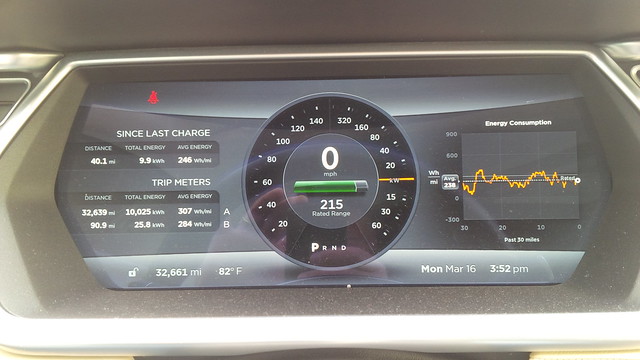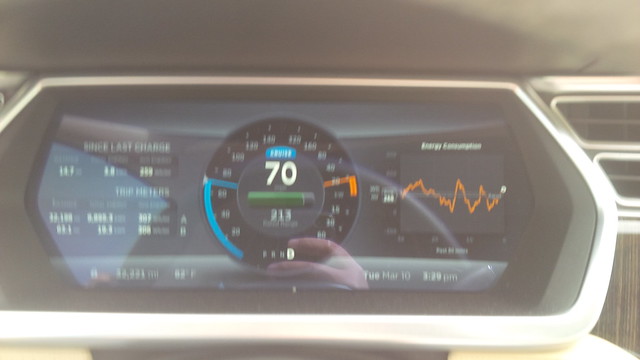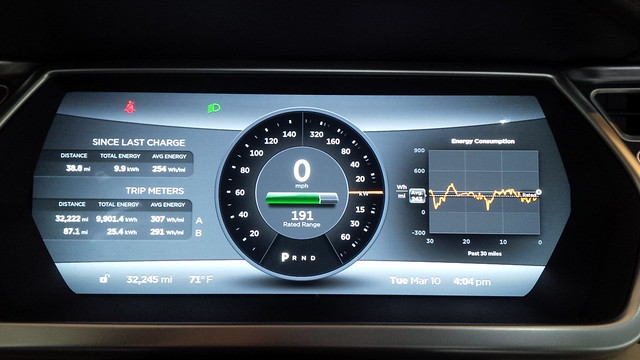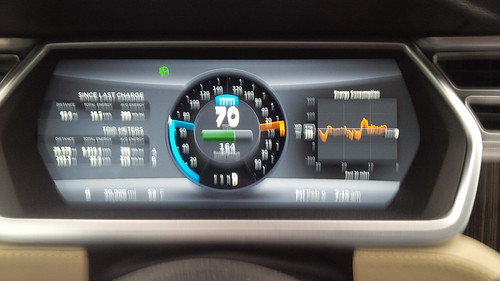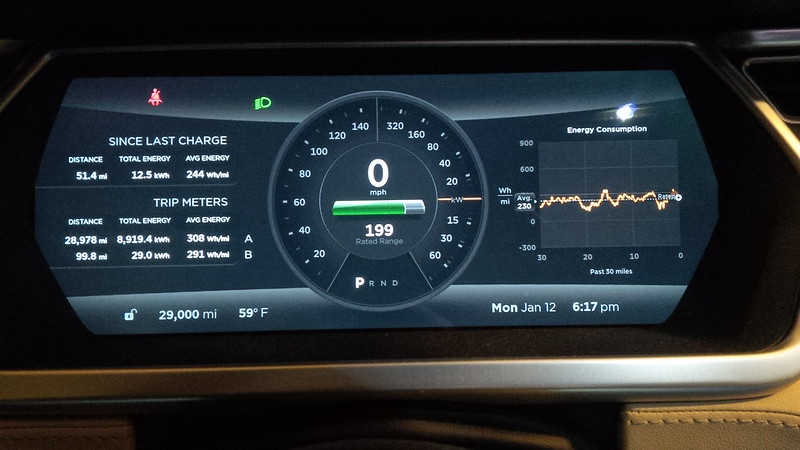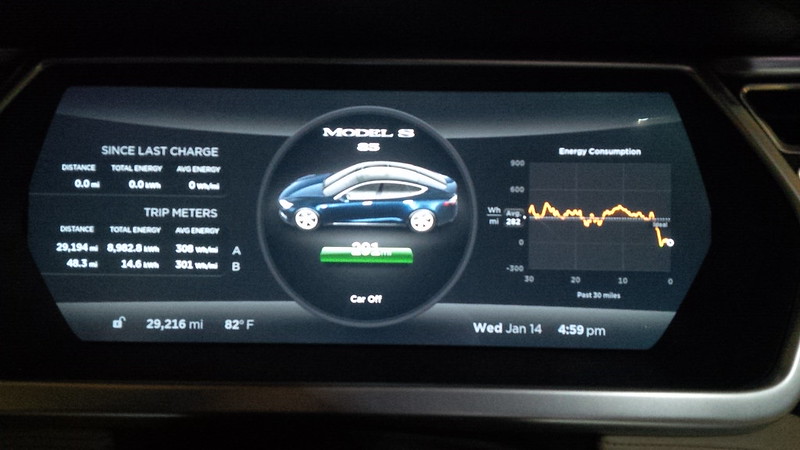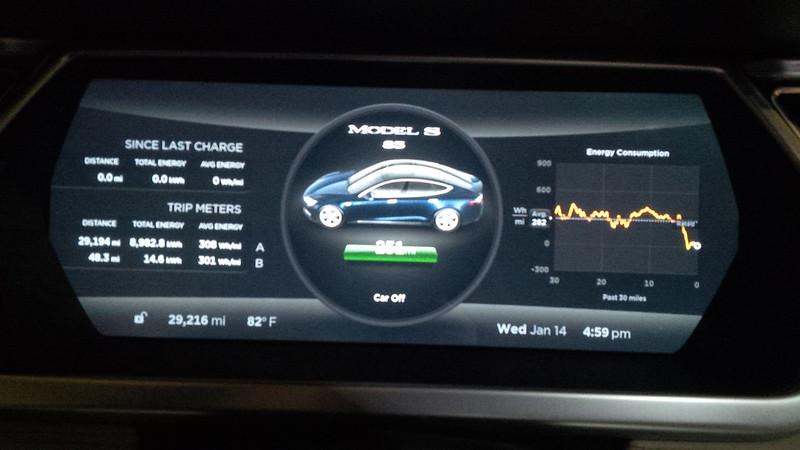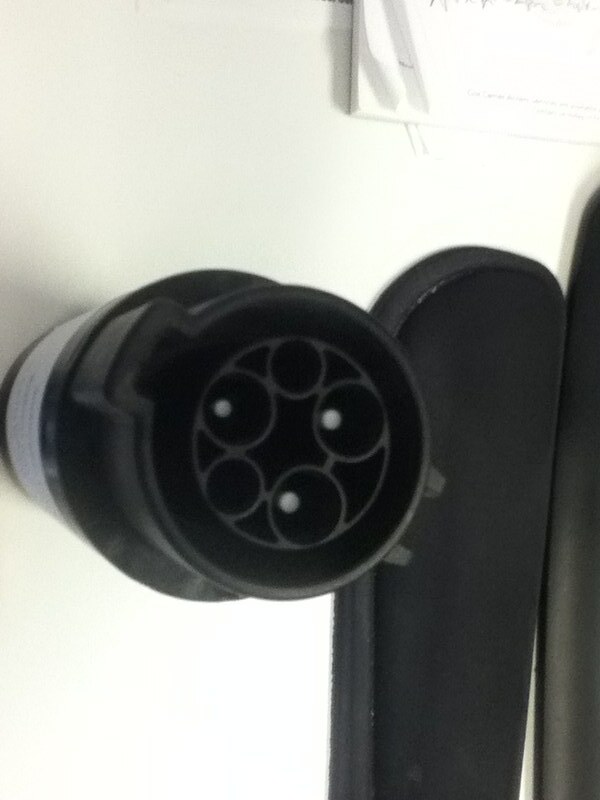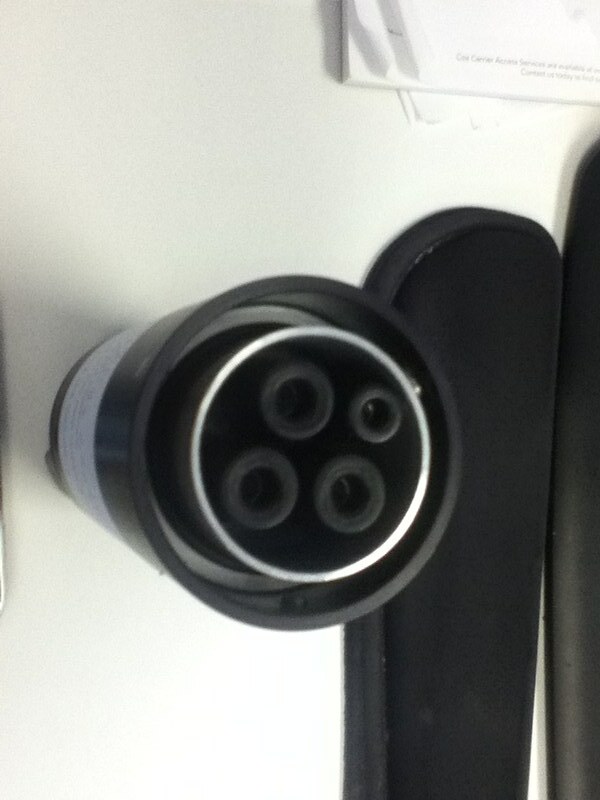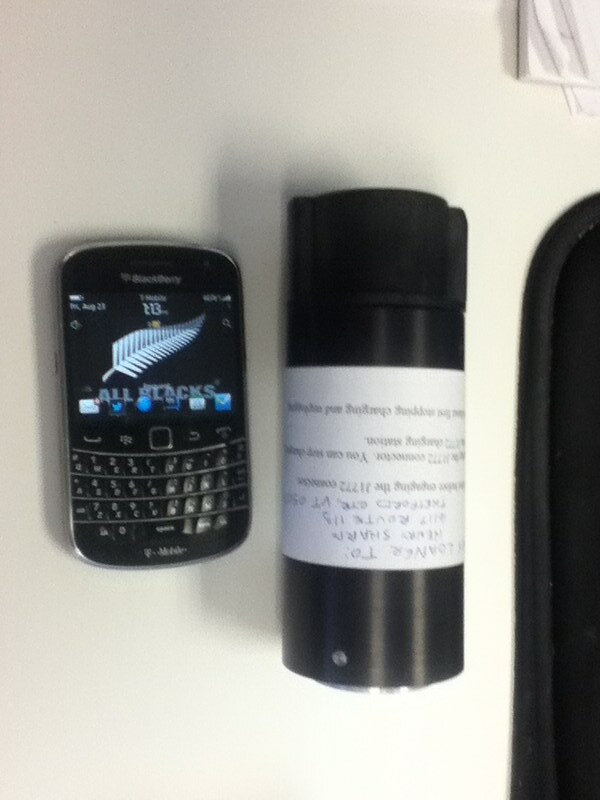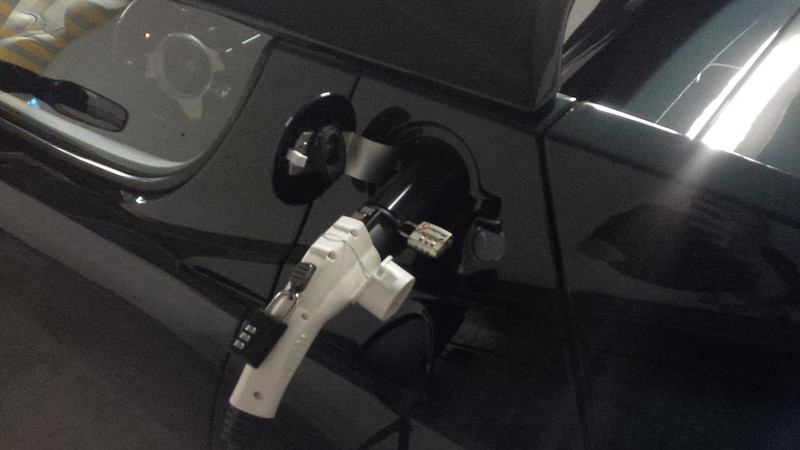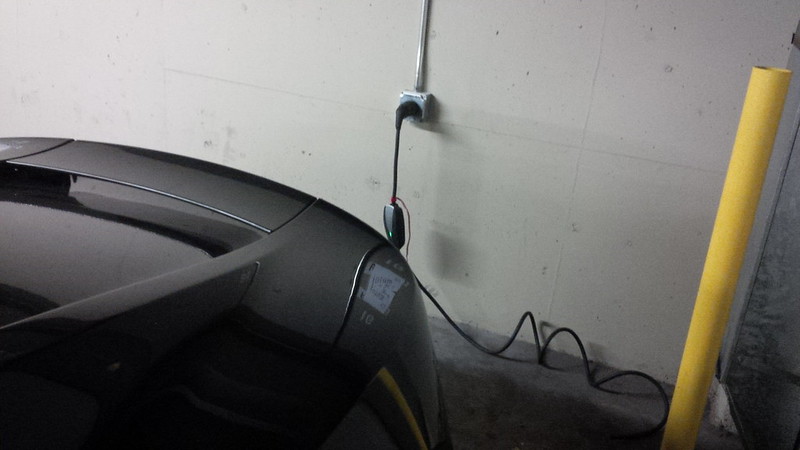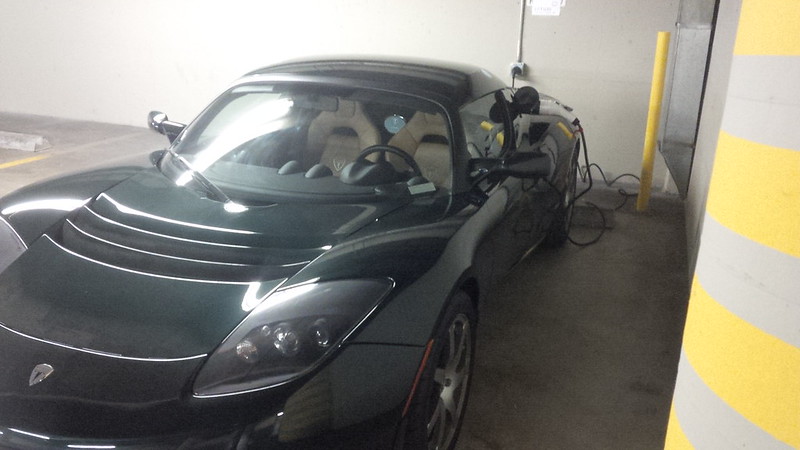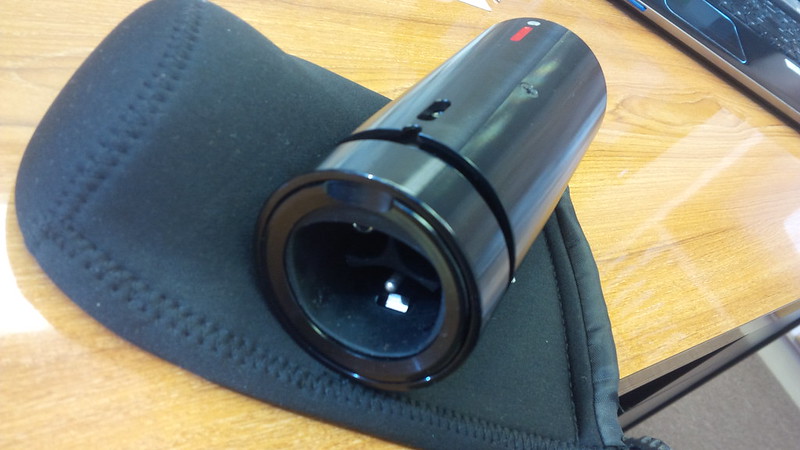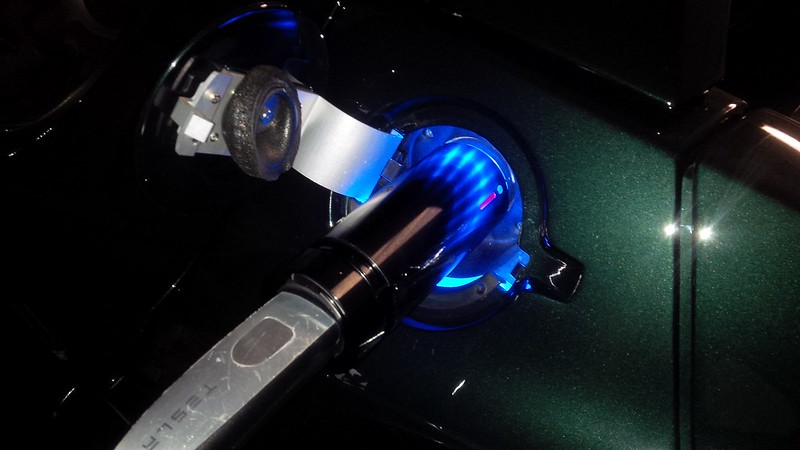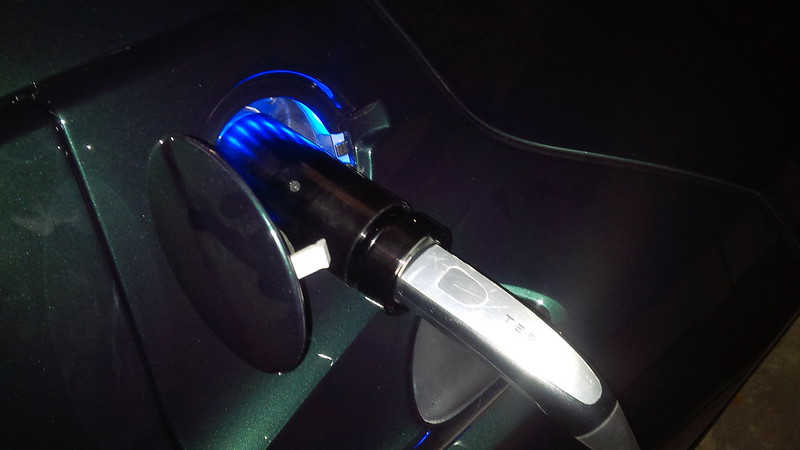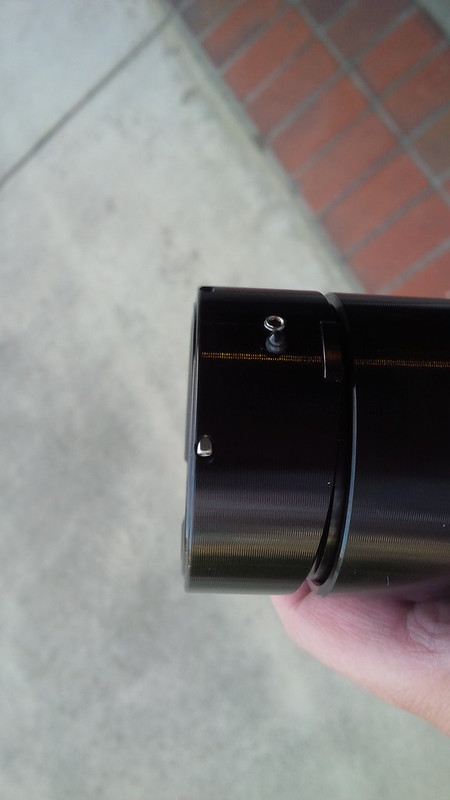A little over a year ago, I put my name on the waitlist for the CHAdeMO to Tesla Model S adapter. At the time, I was unsure whether I would need it or want it, but thought it would be good to get the option. At the time, Tesla wanted around $1,000 for the adapter, and it was very pricey. I figured that I could always turn it down when my number came up.
Well… Something happened between then and now.
Tesla dropped the price and my number was called. So… We said, “what the heck.”
Tesla does such a great job with the packaging for their accessories:
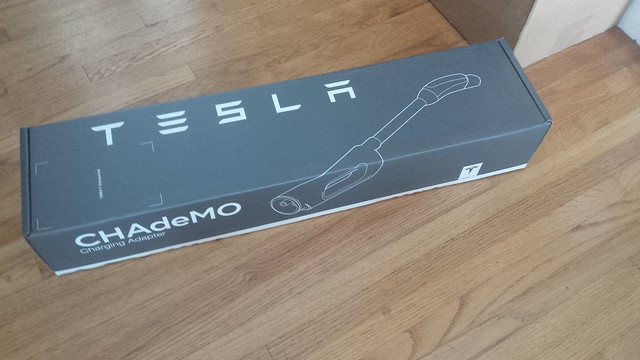
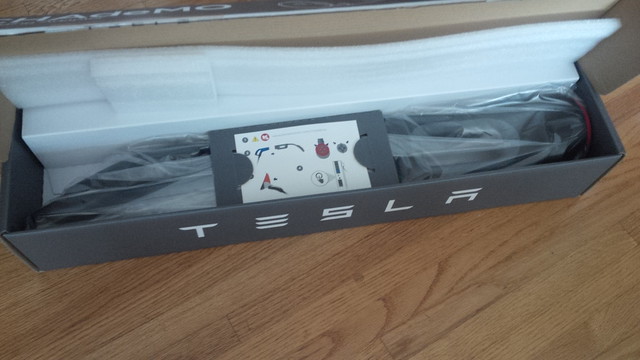
Tesla’s instructions are elegantly presented in the following pictograph:

Being a technical person, I found these pictographs to be well done and quite easy to follow. Now, I’m unsure whether they’re great fro non-technical people, but between this pictograph and the one provided for the Premium Rear Console, I have to tip my hat off to Tesla for providing very easy to follow instructions.
Step 1 is to order the product on the website. Be aware that (at least in the United States) there is a waitlist (as of March 23, 2015). When your number is called, you have to make the decision whether to order it or not.
Step 2 is to receive the box
Step 3 is to open the box, it’s nicely packed with the pictograph instructions above.
So, how do we use the CHAdeMO to Model S Adapter? Well, it depends on which CHAdeMO L3 Charger you’re using. I chose to try the adapter with an Eaton CHAdeMO charger and a Nissan CHAdeMO charger because the two locations that I identified currently provide the charging without a fee. Many of the Nissan CHAdeMOs have been converted to a pay system and require an RFID and payment to charge. I have not yet used one of these.
Step 4 Attach the CHAdeMO cable from the L3 charger to the Adapter.
Make sure to align the notches appropriately, it won’t fit otherwise.
Here is the Eaton CHAdeMO pictured

[Update as of 2015-07-15, wrote a post for the Efacec (the Evapower EV QC 50) that forks off the instructions from here.]
Step 5 is to mate the CHAdeMO to the CHAdeMO to Model S Adapter.
Here is the Eaton CHAdeMO pictured
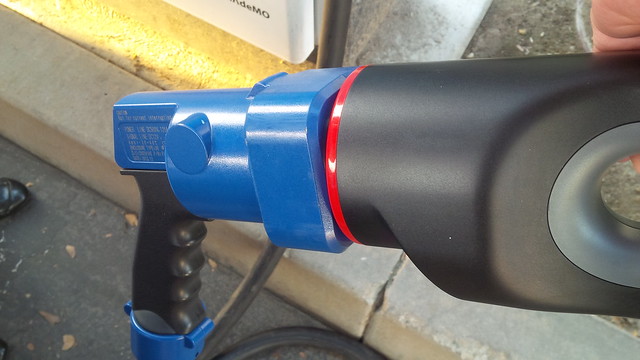
Seat the Eaton CHAdeMO to the Adapter and make sure that it is secure.
Here is the Nissan CHAdeMO pictured
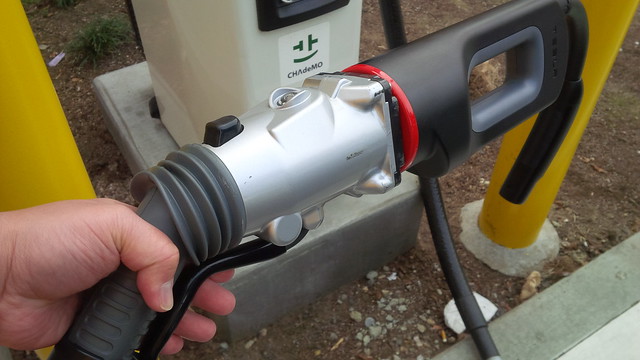
make sure to pull the trigger on the Nissan CHAdeMO to secure the piece to the adapter.
Step 6 is to plug the Adapter to the Model S.
Here is the Eaton CHAdeMO pictured

Here is the Nissan CHAdeMO pictured

Step 7 is to press start on the CHAdeMO Charger to initiate the charge.
Here is the Eaton CHAdeMO pictured

Here is the Nissan CHAdeMO pictured

It’s the blue START button, I forgot to take a picture of me pressing the button.
Step 8 Go back to the car or go about your business, but put a note on the car if you do leave so that anyone who needs to use the charger can contact you. Better yet, if you choose a note, let me recommend the EV Card from Plug In America or Jack Brown’s Take Charge and Go tags. Additionally, I would also recommend checking into Plugshare so that anyone looking at the location remotely will know that someone is charging, at the moment.
If you go back to the car, you will notice the charge speed of CHAdeMO
Here is the Eaton CHAdeMO charging the Model S pictured
From the Model S:

From the Eaton CHAdeMO’s display:

One of the things that you will notice that is different between the Eaton and the Nissan CHAdeMO station is that the Eaton provides an estimate of how long the charge will take to full. The Nissan one that I have found do not do the same.
Here is the Nissan CHAdeMO charging the Model S pictured
From the Model S:

From the Nissan CHAdeMO’s display:

Step 9 When done using the charger, press the STOP button
Here is the Eaton CHAdeMO pictured
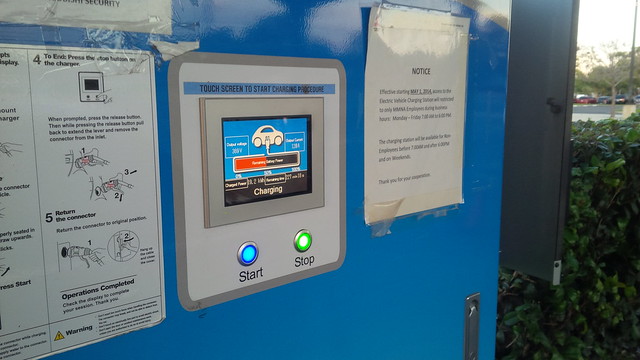
Here is the Nissan CHAdeMO pictured
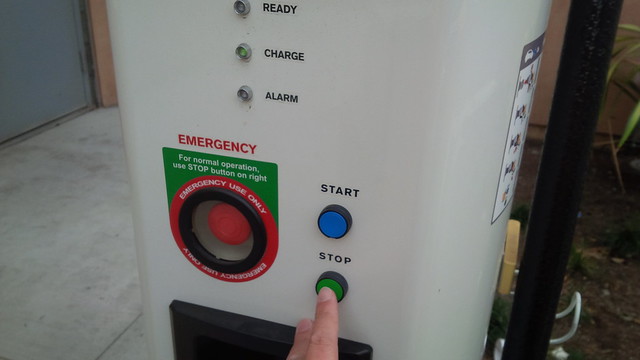
Step 10 Detach the Adapter from the charger’s CHAdeMO cable.
Here is the Eaton CHAdeMO pictured

[I don’t remember if there was a button, but some of them do… press that to release.]
Here is the Nissan CHAdeMO pictured
Step 10A Slide the Grey lock away from the handle

Step 10B Press the black button on “top” of the CHAdeMO cable. Make sure to be ready to catch the CHAdeMO to Model S Adapter.
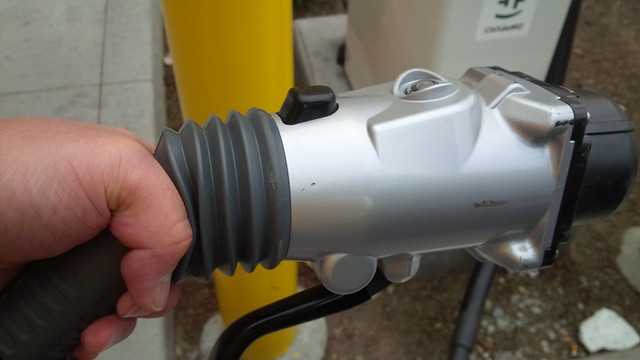
Step 11 Return the cable back to its proper location.
Here is the Eaton CHAdeMO pictured

Here is the Nissan CHAdeMO pictured

Step 12 Return your CHAdeMO to Model S Adapter back to your car and drive off.
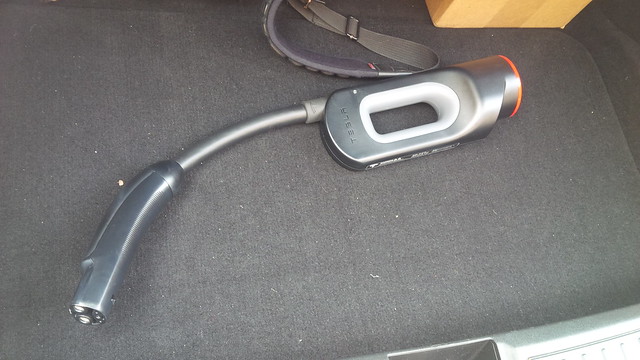
If you’re interested in more pictures of the CHAdeMO to Model S Adapter, here’s my flickr stream.
So, is the adapter worth $1,000? I probably wouldn’t have bought it for that much. However, since they dropped the price to $450, it came down to a price that is less than Henry Sharp’s CAN Adapters for the Roadster.
How useful is it? Well, on a recent trip to San Diego, I found a Nissan dealership (Pacific Nissan in Mission Bay) that allowed me to use their CHAdeMO. This is useful as Tesla has not completed the build out of the Supercharger down to San Diego. The nearest one is the San Juan Capistrano, one that is reported to be very busy with the seven SC stalls at the location.

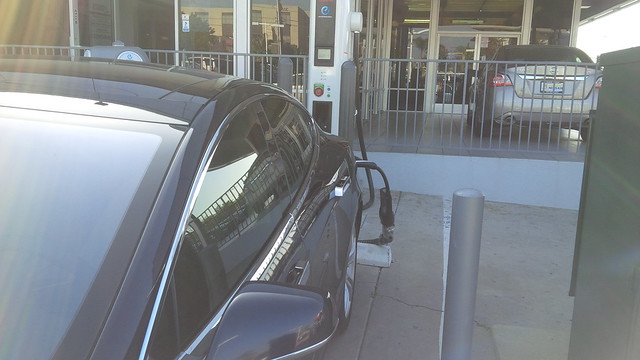

It was quite useful since I arrived in the Mission Bay area about thirty minutes earlier than I expected to. I’m not sure how often I will need to use the adapter, but at $450, it was at a price point that is intriguing. The product is well-built, well documented, and works. Charging adapters are priceless when you need them in an emergency. There’s nothing more embarrassing than running out of charge.
Elon may think that the recently announced 6.2 firmware will end range anxiety, but I find the ability to charge at any rate is comforting. Even 110V at 3 miles per hour could work, in a pinch. But 130+ miles an hour over CHAdeMO is a bit better than 3 miles per hour.




























